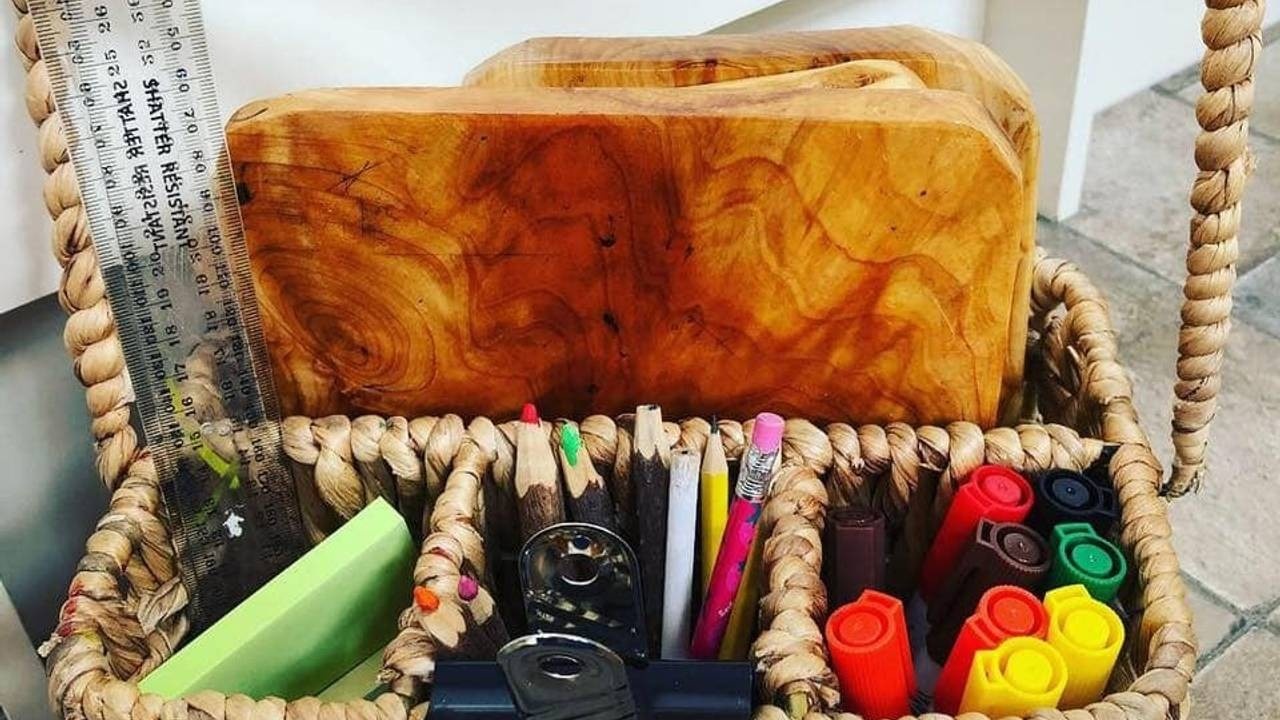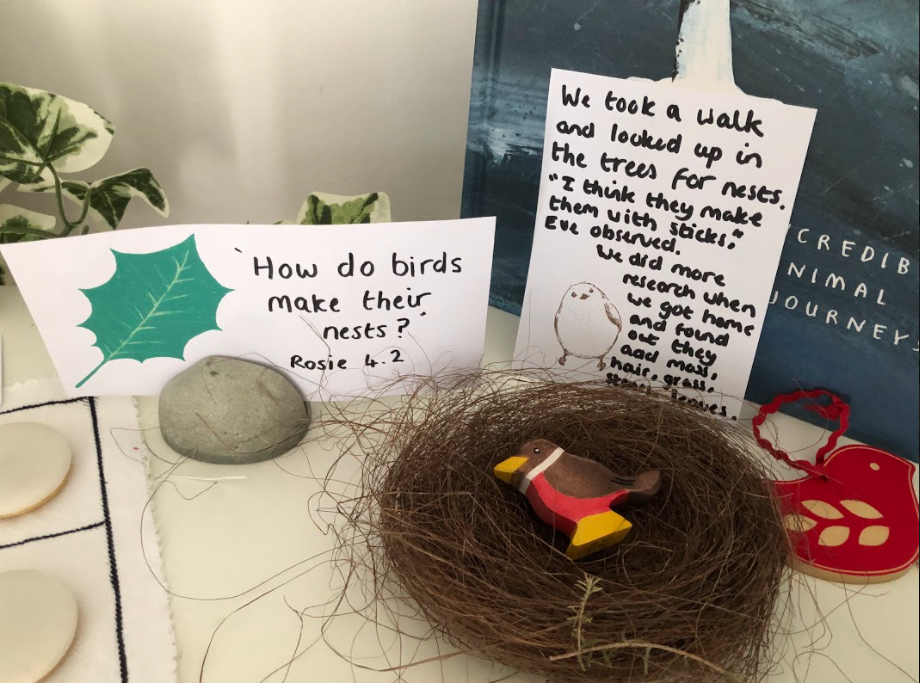Blog
“Strive to make everyday the best day of your life, because there is no good reason not to.” Hal Elrod
How we spend our days is how we spend our time

Working smarter instead of harder is a big part of looking after our wellness.
In Scandinavia it’s very rare to see people working late or even logging over -time as it can be seen as working in an inefficient way.
Learning how to prioritize is a crucial survival skill for getting through pressured times. It brings order to chaos, creates calmness and space, and reduces stress. I walk you through the whole goal setting process inside the Hygge journal.
Essentially think of three tasks you must complete to move you closer to your overall goals each day. These are your needle movers and must happen. Anything else can wait. When we work in this way it means we spend less time working on the day to day tasks that can bog us down.
What 3 things must you get done today?
"The classroom I inherited was disorganised, chaotic and messy, lacking order and calmness"

Hygge case study by Philippa S
My practice before the accreditation:
Our classroom was light and spacious but due to the high ceilings and cold colours, prickly carpet and blue lino flooring it was lacking a homely welcoming feel to reflect our nurturing practise. The classroom I inherited was disorganised, chaotic and messy, lacking order and calmness, requiring an air of order enabling the children to feel calm and in control of their own learning.



The visions I’ve created in my work:
I have created a classroom exuberating a nurturing, peaceful but exciting and inspiring continuous provision-based room. I have thoughtfully planned each area of the classroom, with the children at the heart of my planning and practise.
This has included, but is not limited to:
- Reading: Working with colleagues to read and sort all of EY/KS1/2 reading books to match their phonetic teaching. Working closely with parents to build a partnership based upon trust and honesty – enabling them to bes ...
Hygge Home School - Case Study

TEACHER – HOME EDUCATION SETTING
After the birth of our son, I decided to leave my role as a junior teacher to be a full-time mum. Here began my wonderful journey into the world of early years - fascinating! It was during this time that I discovered the importance of open-ended play and the learning environment. Our home quickly transformed to provide beautiful spaces to play, explore and learn in this new way. Eager to learn more, I was led to the ‘Hygge in the Early Years Accreditation’. A fascination with the Danish lifestyle soon developed and both my husband and I began reading books and incorporating more hygge into our own lives. Based on this new-found knowledge, we decided to home educate our little boy, at least during his early years. The ‘Hygge in the Early Years Accreditation’ has been invaluable in helping me create a beautiful environment in which our son can explore and develop.
Below are some highlights of my journey.
BALANCE - I really enjoyed the first module and ...
Hygge Case Study: "I wanted the Preschool to be relaxed and open ended "

By Anna Webb
-My practice before the accreditation (What I needed help or guidance on)
-The vision I've created in my work
-The changes I've made to my personal life and practice
-The impact this has had on myself, the children and the setting.
-Your next steps for future development.
Before I began the Hygge accreditation I felt we lacked direction and that we were all bringing something to the table but not being able to be consistent with the approaches, I wanted the Preschool to be relaxed and open ended and after having completed the Anna Epgrave in the moment training realised that using the child’s interests and building on this to create a more child cantered approach worked well with our cohort of children, however we still lacked direction, on signing up for the course I really hoped that this would support us with mental wellbeing, self-regulation, behaviour management and the links with the outside being that we are a Forest School setting.

I started the course...
Tidying Up!

Tidying up time can be one of the hardest parts of the day and can feel as though it goes on for ages with very little progress!
Here are three thoughts to help you reflect on your practice:
- Use tidy time as a teaching time: if you’ve got 2 pencils off the floor and you find one more how many will you have altogether?
- As an adult don’t tidy up! Support your children in tidying up through the interactions you make. If children see you tidying up then they may start to believe that they don’t need to put the effort in as someone will do it for them! This is a tricky thing as an adult to stop yourself doing but it’s worth it in the long run!
- Transition points in the day are often the times when we see big feelings or what we might describe as more challenging times of the day. When I worked with children who needed support with managing their big feelings I found keeping an ABC record of their behaviour really useful. It helped me spot patterns in their behaviour and then searc...
Hygge in KS1

I have been a Year one teacher for many years now and we have always followed the routine of continuous provision in the first term to smooth the transition from Reception to Key Stage one and then moving to a more formal method for the rest of the year in preparation for Year 2. We had the same issues each year that some children were ready for that transition whilst others weren’t. They missed the outdoor area from EYFS and the freedom to choose and follow their own learning. Add on top of that the missed opportunities the children have had the last couple of years due to covid and we realised that something needed to change.
I have been interested in hygge for a while from a personal point on view in terms of my home and life so when I discovered hygge in the early years it felt like the natural transition for me. I started listening to the podcasts and at the start of lockdown watched the daily Instagram lives whilst on maternity leave. I returned from maternity leave into school ...
Storage for Mark Making Opportunities

Many of us have a separate space within our setting designated for mark making and writing opportunities. This might act as a central space for children to collect their mark making equipment from and take into an area of provision. Over the years I have had this as part of my classroom set up in both nursery and reception classrooms. I always think it's important to reflect on this area and decide if it's working for you and your cohort. If it's taking up a a large space and no-one is ever at it, consider removing it.

Here is a list of some of my favourite continuous provision for this area obviously this will vary depending on the age and stage of the children you have):
- Pencils
- Crayons
- Chalks
- Whiteboards
- Paper (different colours, types sizes, lined, unlined, squared)
- Envelopes (of different sizes)
- Alphabet books
- Name cards
- Stamps
- Notebooks
- Card
- Wipeable boards
- Home made books (zig zag books)
- Crayon rocks
- Bark pencils
- Ink stampers
- Gell pens
- Charcoal
- Sand pap...
"I don't do Hygge in my provision very well"

I recently heard one of my lovely members panic that she wasn't doing hygge right or even very well.
It's so easy to get distracted with what everyone else around you is doing and start believing that there is only one way to do provision or practice in the early years. Especially when you see so many set ups on social media and start to feel the self doubt creep in: Should I have no plastic toys? But what if my children like playing with lego...is this OK? Or what if I don't have lots of money to buy brand new resources?
When we look at high quality early childhood practice and drawn upon research we know that the most effective early years settings are those that put the child at the heart of the curriculum and reflect/ respond to their needs accordingly. Recognising how and what your children want to learn and making this possible.
A setting could be picture perfect, with the most beautiful wooden small world figures and loose parts to explore, but it's important to remind our...
Storage Ideas

Child's Voice










